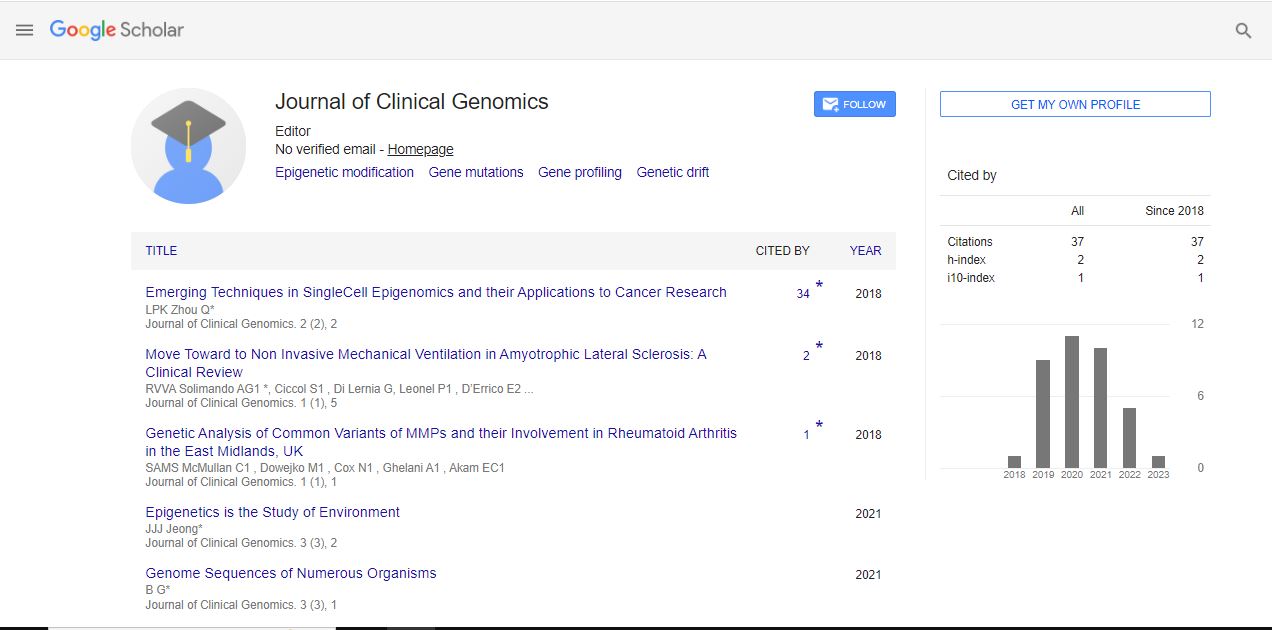Commentary, J Chromatography Res Vol: 6 Issue: 2
Capillary Electro Chromatography: An Advanced Technique for Separation and Analysis
Yingxiang Zhang*
1Department of Chemistry, China Pharmaceutical University, Nanjing, China
*Corresponding Author: Yingxiang Zhang,
Department of Chemistry, China
Pharmaceutical University, Nanjing, China
E-mail: zhang.y@gmail.com
Received date: 02 June, 2023, Manuscript No. JCGR-23-107802;
Editor assigned date: 05 June, 2023, PreQC No. JCGR-23-107802 (PQ);
Reviewed date: 19 June, 2023, QC No. JCGR-23-107802;
Revised date: 26 June, 2023, Manuscript No. JCGR-23-107802 (R);
Published date: 06 July, 2023, DOI: 10.4172/JCGR.1000065.
Citation: Zhang Y (2023) Capillary Electro Chromatography: An Advanced Technique for Separation and Analysis. J Chromatography Res 6:2.
Description
Capillary Electro Chromatography (CEC) represents an innovative and effective technique that combines the advantages of both Capillary Electrophoresis (CE) and High-Performance Liquid Chromatography (HPLC). CEC has emerged as valuable equipment for the separation and analysis of complicated combinations with high efficiency and resolution. This advanced analytical technique has found applications in various fields, including pharmaceuticals, environmental analysis, proteomics, and metabolomics.
Fundamentals of capillary electro chromatography
Capillary electro chromatography operates on the principles of both electrophoresis and chromatography. In conventional liquid chromatography, separation is based on differential interactions between analytes and a stationary phase studied into a structure. In electrophoresis, separation occurs due to the differential migration of charged species in an electric field through a capillary filled with solution. CEC utilizes a stationary phase consisting of a porous particle-packed capillary, which can be chemically modified to provide selective interactions with analytes. An electric field is applied across the capillary, creating a pressure-driven flow of the mobile phase through the stationary phase. The combination of pressure-driven flow and electrophoretic mobility results in improved separation efficiency compared to traditional HPLC.
Instrumentation of capillary electro chromatography
The core components of a capillary electro chromatography system include:
Capillary columns: Capillaries with inner diameters ranging from 25 to 100 μm are commonly used. These capillaries are filled with stationary phase particles, typically in the sub-2 μm size range.
Electro kinetic pump: A high-voltage power supply is employed to generate an electric field across the capillary. The voltage is applied to the ends of the capillary, driving the mobile phase through the filled stationary phase.
UV detector: Most CEC systems include a UV detector to monitor the eluted compounds. Other detection techniques, such as mass spectrometry, fluorescence, or electrochemical detectors, can also be used.
Sample injection system: Precise and reproducible injection of the sample into the capillary is essential for accurate analysis. Different injection methods, including pressure and electro kinetic injection, can be used.
Applications of capillary electro chromatography
Pharmaceutical analysis: CEC has shown great potential in pharmaceutical analysis due to its ability to separate and quantify complex mixtures of drug compounds and their impurities. The technique is used in drug development, quality control, and pharmacokinetic studies.
Environmental analysis: CEC can be utilized for the analysis of environmental samples, including water, soil, and air, to determine the presence and concentration of pollutants and contaminants.
Proteomics and metaolomics: CEC associated with mass spectrometry enables the analysis of proteins and metabolites in biological samples. This has significant implications in disease biomarker discovery and understanding cellular processes.
Chiral separations: Capillary electro chromatography can efficiently separate enantiomers, which are mirror-image isomers, making it invaluable in the pharmaceutical and agrochemical industries where enantiopurity is important.
Advantages of capillary electro chromatography
High efficiency: CEC provides higher separation efficiency compared to conventional HPLC due to reduced band broadening and increased mass transfer.
Enhanced sensitivity: The use of small-diameter capillaries and the direct injection of a small sample volume result in enhanced sensitivity, enabling it ideal for analyzing limited or trace amounts of samples.
Speed and throughput: CEC provide rapid analysis, enabling high sample throughput and increased productivity in laboratories.
Lower cost and reduced waste: CEC use less mobile phase and generates less waste compared to HPLC, reducing operating costs and environmental impact.
 Spanish
Spanish  Chinese
Chinese  Russian
Russian  German
German  French
French  Japanese
Japanese  Portuguese
Portuguese  Hindi
Hindi 